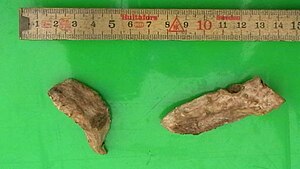[amazon_link asins=’B01LQF4Y6S,B01LWOOLWB,B00ZEA2Z36,B00LLLPKW0,B00ZE9UUHK,B00KC0UABC,B01MXI6ZER,B004H2WNDY,B00SI5DX08′ template=’ProductCarousel’ store=’finmeacur-20′ marketplace=’US’ link_id=’12227092-320d-11e7-ac64-0725eecc2a2e’]
Botanical Name : Myroxylon pereirae
Family: Fabaceae
Subfamily: Faboideae
Tribe: Sophoreae
Genus: Myroxylon
Kingdom: Plantae
Order: Fabales
Common Name :Peru Balsam, Balsam of Peru , Tolu Balsam
Habitat ; Myroxylon pereirae is native to tropical America
Description:
Myroxylon pereirae is a large tree growing to 40 m tall, with evergreen pinnate leaves 15 cm long with 5-13 leaflets. The flowers are white with yellow stamens, produced in racemes. The fruit is a pod 7–11 cm long, containing a single seed.
CLICK & SEE THE PICTURES

The wood is dark brown with a deep red heartwood. Natural oils grant it excellent decay resistance. In fact, it is also resistant to preservative treatment. Its specific gravity is 0.74 to 0.81.
As regards woodworking, this tree is regarded as moderately difficult to work but can be finished with a high natural polish; it tends to cause some tool dulling.
Its sweetish scent, reminiscent of vanilla and green olives, has caused it to be used in the manufacture of perfumes as a source for Balsam. Balsam of Peru is used as a flavoring and fragrance in many products and can cause allergic reactions.
Peru Balsam aromatic resin is extracted from the variant Myroxylon balsamum pereirae, native from Central America farther north. The name is a misinterpretation of its origin, since it was originally assembled and shipped to Europe from the ports of Callao and Lima, in Peru, even though the species is not indigenous to Peru. The indigenous use of Peru Balsam led to its export to Europe in the seventeenth century, where it was first documented in the German Pharmacopedia. Today El Salvador is the main exporter of Peru Balsam where it is extracted under a plainly handicraft process.
Peru balsam has uses in medicine, pharmaceutical, in the food industry and in perfumery. It has been used as a cough suppressant, in the treatment of dry socket in dentistry, in suppositories for hemorrhoids, the plants have been reported to inhibit Mycobacterium tuberculosis as well as the common ulcer-causing bacteria, H. pylori in test-tube studies, so it is used topically as a treatment of wounds and ulcers, as an antiseptic and used as an anal muscle relaxant. Peru Balsam can be found in diaper rash ointments, hair tonics, antidandruff preparations, and feminine hygiene sprays and as a natural fragrance in soaps, detergents, creams, lotions, and perfumes
Medicinal Uses;
Peru Balsam has been in the US Pharmacopeia since 1820 used for bronchitis, laryngitis, dysmenorrhea, diarrhea, dysentery and leucorrhea and has also been used as a food flavoring and fragrance material for its aromatic vanilla like-odor. Today it is used extensively in topical preparations for the treatment of wounds, ulcers, and scabies, and can be found in hair tonics, anti-dandruff preparations, feminine hygiene sprays and as a natural fragrance in soaps, detergents, creams, lotions and perfumes.
Peruvian balsam is strongly antiseptic and stimulates repair of damaged tissue. It is usually taken internally as an expectorant and decongestant to treat emphysema, bronchitis, and bronchial asthma. It may also be taken to treat sore throats and diarrhea. Externally, the balsam is applied to skin afflictions. It also stimulates the heart, increases blood pressure and lessens mucus secretions. Traditionally used for rheumatic pain and skin problems including scabies, diaper rash, bedsores, prurigo, eczema, sore nipples and wounds. It also destroys the itch acarus and its eggs.
Other Uses: Myroxylon pereirae is a beautiful, tall jungle trees are also known for their different valuable , mahogany-like wood. The process of extraction produces three grades of a balsamic and aromatic resin.
Known Hazards: Allergic reactions are possible, and it also may increase your sensitivity to sunlight. Whether taken internally or externally, large quantities of balsam of Tolu can damage the kidneys.
Disclaimer : The information presented herein is intended for educational purposes only. Individual results may vary, and before using any supplement, it is always advisable to consult with your own health care provider
Resources:
http://en.wikipedia.org/wiki/Myroxylon
http://www.herbnet.com/Herb%20Uses_OPQ.htm
http://www.erbesalute.it/web/scheda.asp?id=2440
http://www.anniesremedy.com/herb_detail47.php#Cautions

















































